3D illusions
General:
Madonnari is a type of street art that is very popular in the world. The drawings are made on the sidewalk and distorted in such a way that the illusion of a three-dimensional object appears when you look at the drawing from a certain point. Many artists use methods developed back in the sixteenth century to make such drawings. Some graphics packages, such as Photoshop, allow you to distort images in this way. However, they cannot build illusions at the junction of two planes, and the point of view cannot be predetermined, since this tool is designed to remove perspective distortions, and not to build illusions. An example of a program (my term paper) that allows you to build 3D illusions at the junction of two or three planes with a choice of a point of view from which a spatial effect is created. I have not heard about the existence of graphic packages that are designed to build 3D illusions on one or more planes (although I specifically investigated this issue). Despite the simplicity of implementation, the idea to create such a graphical tool seemed very interesting to me.
Introduction:
Anamorphosis is the art of constructing intentionally distorted images that, from a certain point, restore their original form. The art of Anamorphosis was invented in China and brought to Italy in the sixteenth century. Probably one of the most spectacular and impressive examples is Madamorari's Anamorphosis, a form of street art. The central object of art in Italy in the sixteenth century was the Madonna, apparently she is the reason for the name "Madonnari".
This type of art is very popular in our time, and many enterprises use 3D illusions for advertising. An example of such illusions is shown in the figure.
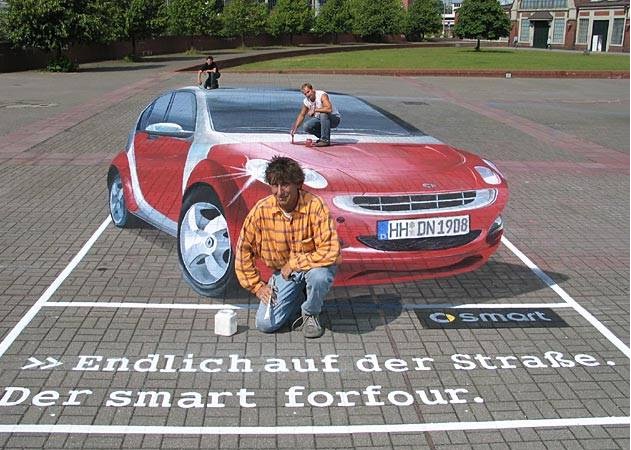
An experiment has recently been launched in Canada in which the speed of vehicles is controlled by an optical illusion made on the road (this experiment is being conducted by the Traffic Safety Foundation in British Columbia).
Mathematical model:
Let us want to get the illusion of the image in three planes. Consider the Cartesian coordinate system in space.
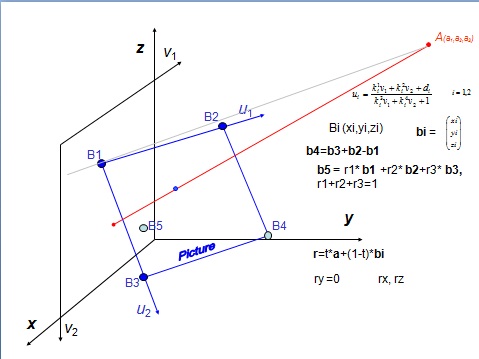
Thus, the task is to construct the projection of the image plane onto the coordinate planes. Let (u1, u2) the coordinates of the pixel in the image plane, (v1, v2) the coordinates of the pixels in one of the coordinate planes. It is necessary to obtain a projective transformation between two planes. So the transformation is a rational function of the form

To find ten coefficients K, we need to know the set of five points (u1, u2) and the corresponding set of points (v1, v2). These sets can be found using the geometrical point of view (see the figure with the Cartesian coordinate system). If we substitute these points in the above equation, we get a system of linear equations, the variables of this system are the coefficients K from the same equation. As a result, we get:
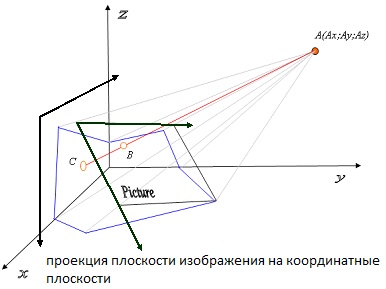
The program works with bitmap images. The user can enter the coordinates of the point and the size of the file where the illusion will be built. After that, images can be selected that will be placed in 3D space, sizes can be changed, and they can be projected onto the plane (or planes), where the illusion is built. The result of the program is a file-image, which is printed and viewed from a certain point. The result of the program is shown in Figures 5 and 6. If you print, bend and examine the image in Figure 5 from a certain point, this will create an illusion (shown in Figure 6).
figure 5
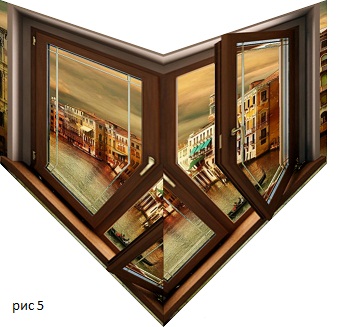
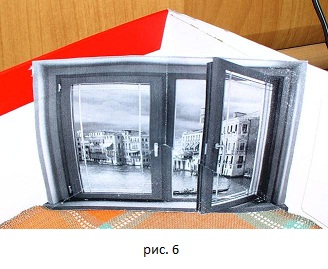
A small presentation of the program:
Worked on the project: Me and Elchugin Eugene.
